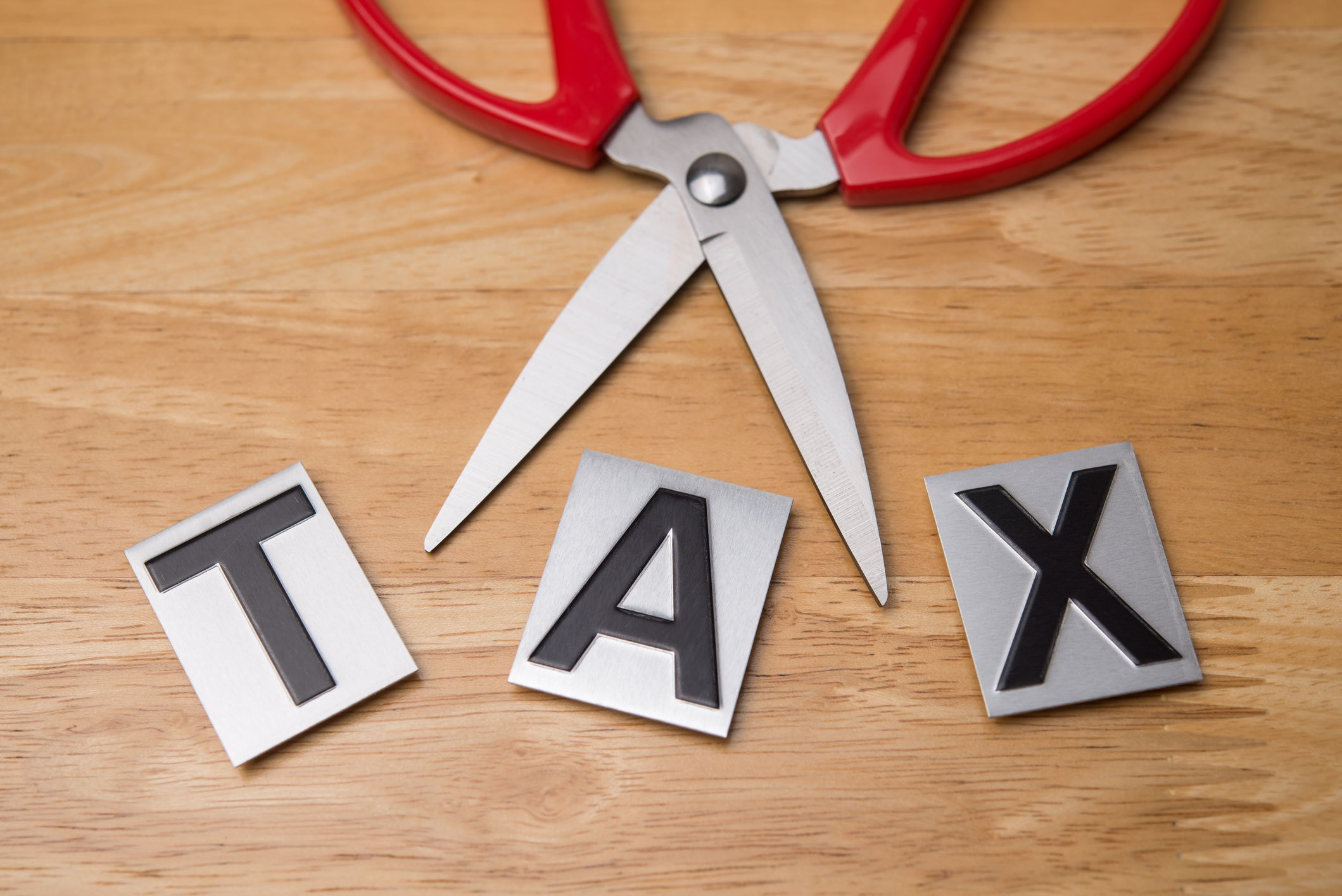What to Know About New Medicaid Cuts: Is Your Local Hospital Closing Soon?
Trump’s ‘One Big Beautiful Bill’ is now law, and rural hospitals across the U.S. are on the chopping block.


Hundreds of rural hospitals across the U.S. are bracing for potential service cuts or imminent closures due to President Donald Trump’s steep Medicaid cuts.
The Trump administration's so-called "One Big Beautiful Bill" (OBBB), signed into law on July 4, will slash Medicaid spending by an estimated $1.02 trillion to offset tax cuts. The expensive measure adds over $3 trillion to the national debt over the next decade.
Now, over 300 rural hospitals are bracing for immediate closure. That might include your local hospital.
From just $107.88 $24.99 for Kiplinger Personal Finance
Become a smarter, better informed investor. Subscribe from just $107.88 $24.99, plus get up to 4 Special Issues

Sign up for Kiplinger’s Free Newsletters
Profit and prosper with the best of expert advice on investing, taxes, retirement, personal finance and more - straight to your e-mail.
Profit and prosper with the best of expert advice - straight to your e-mail.
Some experts predict that cuts to Medicaid will impact nearly every state, with most expected to see more than 25% of their hospitals shut down. In 11 states, the risk is even higher, with 50% or more of hospitals at risk.
That’s because rural hospitals often have lower financial reserves, meaning any reduction in revenue could lead to closures or force some to roll back essential services.
President Donald Trump’s tax overhaul legislation represents the largest federal rollback to Medicaid to date.
Here are three things you need to know about what Trump’s Medicaid cuts could mean for you in 2025.
1. Are hospitals closing due to Medicaid cuts?
Overall, more than 700 rural hospitals could close due to Medicaid cuts, which translates to one-third of all rural hospitals in the country. As noted, an estimated 300 are at immediate risk of shutting down.
The most at-risk hospitals are located in isolated rural communities, which would force residents to travel long distances for inpatient or emergency care.
These hospitals may also be reliant on Medicaid reimbursements, as studies show that adults and children in small towns and rural communities are more likely to have Medicaid or the Children’s Health Insurance Program (CHIP).
The top five states that could see the most closures are so-called "red states," led by Kansas.
- In Kansas, an estimated 66 rural hospitals could be on the chopping block, according to the Center for Healthcare Quality & Payment Reform, with 89 facing service cuts.
- Researchers project that 28 rural hospitals in Kansas are at immediate risk of closing due to Medicaid cuts.
- This would be followed by Oklahoma, Alabama, Texas, and Mississippi.
- As a snapshot, in Texas, as many as 108 (or 69%) of rural hospitals would face losses in services. An estimated 66 hospitals are at risk of closing, with 29 flagged under immediate risk.
2. Many rural hospitals rely on Medicaid
Rural hospitals face unique challenges with funding that are aggravated by insufficient health insurance reimbursements and unstable revenue streams from local taxes or government grants.
Many rural and frontier hospitals also face closure risks because private insurance plans pay them less than what it costs to deliver services to patients. These often offset hospital losses on services delivered to uninsured and Medicaid patients.
The major funding cut for Medicaid spending in the OBBB will be a significant loss for struggling facilities.
According to estimates from Manatt Health, rural hospitals stand to lose $70 billion over the next decade as a result of Trump’s tax cuts and spending legislation. Put it another way: Hospitals are projected to lose 21 cents from every Medicaid dollar received.
- In Kansas, where more than half of rural hospitals are at risk of closing, facilities will see an estimated 15% reduction in Medicaid reimbursement.
- Missouri, where one-third of rural hospitals could close, can expect a 29% reduction.
- In West Virginia, the reductions in Medicaid funding could translate to a 22% loss in reimbursement.
“Medicaid is a substantial source of federal funds in rural communities across the country,” said Alan Morgan, CEO of the National Rural Health Association (NRHA). “It’s very clear that Medicaid cuts will result in rural hospital closures, resulting in loss of access to care for those living in rural America.”
3. Rural hospitals closing: Trump’s stop-gap won’t last
The final version of Trump’s megabill includes $50 billion in relief funding over six-year period to keep rural hospitals and frontier hospitals afloat.
The financial cushion to be administered by a newly created Rural Health Transformation Program would still come up short to filling the $1.02 trillion budget gap in Medicaid spending, according to tax policy analysts.
According to the OBBB, the $50 billion in funds is to be delivered in two ways to rural health care facilities:
1. Half will be delivered to states that apply to the Rural Health Transformation Program, with a detailed "rural health transformation plan" explaining how rural hospitals will improve access to facilities, other health care providers, and services to their residents, among other strategies.
2. The other 50% of the funds will be distributed to states in a process yet to be determined.
3. The U.S. Treasury Department will provide an allotted amount of $10 billion per year to rural health care providers, starting on fiscal year 2026 through 2030.
4. These funds include rural hospitals, rural health clinics, community mental health centers, and federally qualified health centers.
5. States must apply no later than December 31, 2025, to be considered for the allotted funding.
As part of the detailed “rural health transformation plan,” rural hospitals that apply for funding must identify specific causes driving the accelerating rate of stand-alone rural hospitals becoming at risk of closure, conversion, or service reduction.
Medicaid cuts in the 'Big Beautiful Bill': What you can do to prepare
Approximately 60 million people in the U.S. rely on rural hospitals and health care facilities, according to the Bipartisan Policy Center, representing 20% of the population.
The Trump administration’s major budget rollback for Medicaid will inevitably be a source of financial strain for rural health care facilities that are already struggling. The Center for Healthcare Quality & Payment Reform, estimates that more than 700 rural hospitals could face closures due to the newly enacted tax policy.
As ruled by the OBBB, states can apply for allocated funding for rural hospitals and health care facilities via the Rural Health Transformation Program. State governments may also come up with different revenue sources to streamline funds to these essential providers.
These developments should happen in the upcoming months, so stay tuned to your local authorities and how they respond the new tax landscape.
Other 2025 Tax Changes
- What's Wrong With Trump's Pledge to End Taxes on SS Benefits?
- 2025 Tax Deduction Change for Those Over Age 65
- Social Security Email About Trump's Big Beautiful Bill Sparks Confusion
Profit and prosper with the best of Kiplinger's advice on investing, taxes, retirement, personal finance and much more. Delivered daily. Enter your email in the box and click Sign Me Up.

Gabriella Cruz-Martínez is a finance journalist with 8 years of experience covering consumer debt, economic policy, and tax.
Gabriella’s work has also appeared in Yahoo Finance, Money Magazine, The Hyde Park Herald, and the Journal Gazette & Times-Courier.
As a reporter and journalist, she enjoys writing stories that empower people from diverse backgrounds about their finances, no matter their stage in life.
-
 The Best Vanguard Bond Funds to Buy
The Best Vanguard Bond Funds to BuyInvestors seeking the best Vanguard bond funds can pick between mutual funds and ETFs spanning maturities, credit qualities, tax treatment and geographies.
-
 Are You Afraid of an IRS Audit? 8 Ways to Beat Tax Audit Anxiety
Are You Afraid of an IRS Audit? 8 Ways to Beat Tax Audit AnxietyTax Season Tax audit anxiety is like a wild beast. Here’s how you can help tame it.
-
 The Kiplinger Letter's 10 Forecasts for 2026
The Kiplinger Letter's 10 Forecasts for 2026The Kiplinger Letter Here are some of the biggest events and trends in economics, politics and tech that will shape the new year.
-
 States That Tax Social Security Benefits in 2026
States That Tax Social Security Benefits in 2026Retirement Tax Not all retirees who live in states that tax Social Security benefits have to pay state income taxes. Will your benefits be taxed?
-
 3 Major Changes to the Charitable Deduction for 2026
3 Major Changes to the Charitable Deduction for 2026Tax Breaks About 144 million Americans might qualify for the 2026 universal charity deduction, while high earners face new IRS limits. Here's what to know.
-
 Retirees in These 7 States Could Pay Less Property Taxes Next Year
Retirees in These 7 States Could Pay Less Property Taxes Next YearState Taxes Retirement property tax bills could be up to 65% cheaper for some older adults in 2026. Do you qualify?
-
 Estate Tax Quiz: Can You Pass the Test on the 40% Federal Rate?
Estate Tax Quiz: Can You Pass the Test on the 40% Federal Rate?Quiz How well do you know the new 2026 IRS rules for wealth transfer and the specific tax brackets that affect your heirs? Let's find out!
-
 Mamdani Millionaire's Tax: Let the New York Exodus Begin?
Mamdani Millionaire's Tax: Let the New York Exodus Begin?State Tax Will higher income taxes drive the wealthy to flee New York in 2026?
-
 The November CPI Report Is Out. Here's What It Means for Rising Prices
The November CPI Report Is Out. Here's What It Means for Rising PricesThe November CPI report came in lighter than expected, but the delayed data give an incomplete picture of inflation, say economists.
-
 Law Reversal Looming? Trump Eyes 2026 Gambling Winnings Tax Change
Law Reversal Looming? Trump Eyes 2026 Gambling Winnings Tax ChangeTax Deductions It's no secret that the IRS is coming after your gambling winnings in 2026. But how long will that last?
-
 Trump's Plan to Eliminate Income Tax: 7 Things to Know Now
Trump's Plan to Eliminate Income Tax: 7 Things to Know NowTax Policy The potential consequences of eliminating taxes in favor of Trump tariffs could impact everything from inflation to Social Security and might give some U.S. taxpayers pause.